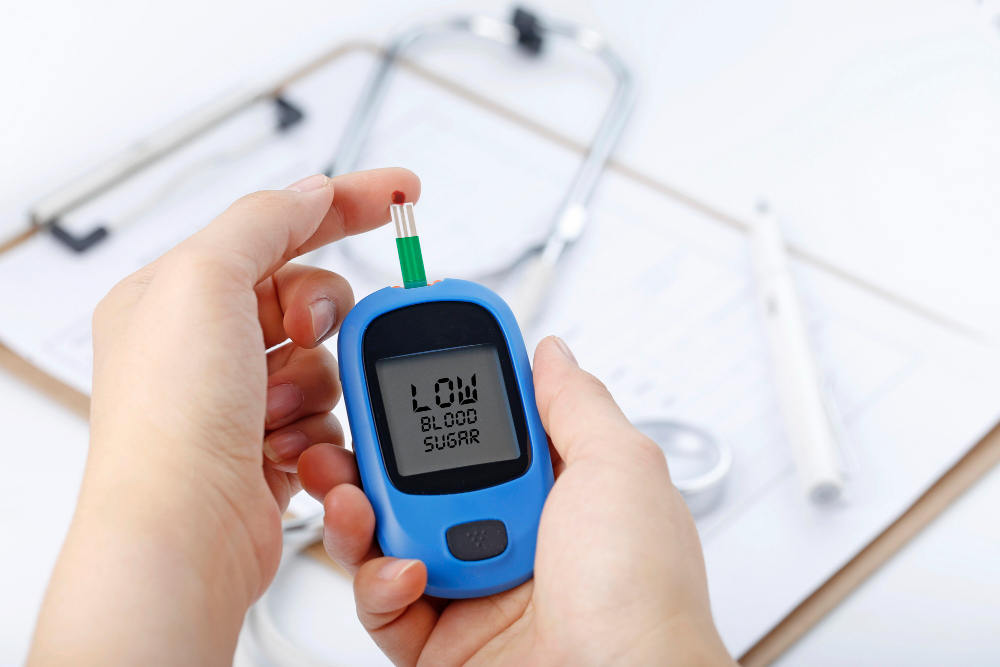Introduction to Type 2 Diabetes
Diabetes is one of the most prevalent chronic health conditions affecting people worldwide. With millions of individuals diagnosed every year, it has become a pressing public health concern. Among the different types of diabetes, Type 2 diabetes is the most common, and unlike Type 1 diabetes, it usually develops later in life.
Understanding this condition is not just about knowing the symptoms or treatments—it’s about tailoring a management plan that works uniquely for you. A personalized approach to dealing with diabetes can significantly improve your overall health and well-being.
Type 2 diabetes primarily occurs when your body either resists the effects of insulin or doesn’t produce enough to maintain normal glucose levels. Insulin, a hormone made by the pancreas, allows your cells to absorb sugar from your blood to use for energy. When this process breaks down, sugar builds up in your bloodstream, leading to a range of complications if left unmanaged.
Why a Personalized Approach to Diabetes Matters
Every person with Type 2 diabetes experiences the condition differently. While the underlying cause remains the same—elevated blood glucose due to insulin resistance or deficiency—the triggers, symptoms, and responses to treatment vary significantly. What works for one person might not be effective for another. A one-size-fits-all treatment strategy often leads to frustration, poor blood sugar control, and even complications.
Personalization involves assessing your lifestyle, medical history, genetic predisposition, and personal goals to create a plan that supports your long-term health. It empowers you to take an active role in your diabetes management and helps you make informed decisions about your care.
Early Warning Signs You Shouldn’t Ignore
One of the challenges with Type 2 diabetes is that its symptoms can be subtle at first. Many people go years without a diagnosis, mistakenly attributing signs like fatigue or frequent urination to other causes. By the time they receive a diagnosis, significant damage may already have occurred to the nerves, eyes, kidneys, or cardiovascular system.
Some of the most common symptoms include increased thirst, frequent urination, blurry vision, slow-healing wounds, and numbness or tingling in the hands and feet. Sudden weight loss, despite eating normally, and a persistent feeling of hunger or fatigue may also be signs of diabetes. Recognizing these symptoms early can make a world of difference in your health journey.
The Role of Blood Sugar Monitoring in Diabetes Management
Monitoring your blood glucose levels is a cornerstone of effective diabetes management. It offers real-time feedback on how your body responds to food, activity, stress, and medication. When you understand these patterns, you can make more informed choices that help maintain stable blood sugar levels.
There are various tools available for tracking your glucose, ranging from traditional fingerstick glucometers to continuous glucose monitors (CGMs). A CGM provides a more comprehensive picture by measuring glucose levels throughout the day and night.
Regardless of the method you choose, consistency is key. Regular monitoring not only helps you stay within target ranges but also alerts you to patterns that may require adjustments in your care plan.
Understanding the Importance of Nutrition in Diabetes Control
Food plays a crucial role in how well you manage diabetes. While there’s no universal “diabetes diet,” certain nutritional principles are beneficial across the board. A personalized eating plan that aligns with your cultural preferences, lifestyle, and health goals can help you manage your blood sugar more effectively.
Complex carbohydrates like whole grains, legumes, and vegetables have a slower impact on blood sugar compared to simple sugars. Proteins and healthy fats help you feel full longer and provide a steady source of energy. It’s also important to consider the timing of meals and snacks, as consistent eating patterns support better glucose control.
Working with a registered dietitian or certified diabetes educator can help you develop a meal plan that suits your individual needs. Small, manageable changes to your diet can lead to significant improvements in your blood glucose levels and overall health.
The Role of Physical Activity in Diabetes Management

Exercise is another powerful tool in managing Type 2 diabetes. Physical activity helps your body use insulin more efficiently and can lower blood sugar levels both immediately and over time. Regular exercise also supports weight loss, reduces blood pressure, improves cholesterol levels, and enhances your overall sense of well-being.
You don’t need to become a fitness enthusiast to benefit. Simple activities like walking, cycling, or gardening can make a big difference. The key is to find something you enjoy and stick with it. A personalized exercise plan that fits your abilities and schedule will be easier to maintain in the long run.
If you’re new to physical activity or have been inactive for a while, it’s wise to consult your healthcare provider before starting a new routine. They can help you identify safe and effective ways to get moving and track your progress.
Medication and Medical Management: More Than Just Pills
For many people with Type 2 diabetes, lifestyle changes alone aren’t enough to maintain healthy blood sugar levels. Medications either oral or injectable may be necessary. These include drugs that help your body produce more insulin, increase insulin sensitivity, or slow the digestion of carbohydrates.
Insulin therapy may eventually be required, especially if your pancreas is no longer producing enough insulin on its own. There’s no shame in using insulin it’s a powerful and essential hormone that your body needs.
It’s crucial to follow your healthcare provider’s guidance and attend regular appointments. Your medications may need to be adjusted over time, and ongoing monitoring helps ensure they’re working effectively. Don’t hesitate to speak up if you’re experiencing side effects or concerns your medical team is there to support you.
Mental Health and Diabetes: The Overlooked Connection
Living with diabetes can take a toll on your mental health. Managing the condition requires daily attention, and the constant need to monitor, plan, and adjust can be exhausting. Many people with diabetes experience feelings of stress, anxiety, or depression. These emotional challenges can impact your ability to follow your treatment plan and maintain good control over your blood sugar levels.
Taking care of your mental well-being is just as important as managing your physical health. This might involve talking to a therapist, joining a diabetes support group, or practicing mindfulness techniques like meditation or yoga. Open communication with your healthcare provider about how you’re feeling can lead to better overall outcomes.
How Sleep Affects Blood Sugar and Diabetes
Quality sleep is another often-overlooked component of diabetes management. Poor sleep can disrupt hormone levels that regulate appetite and blood sugar, leading to higher glucose levels and increased insulin resistance. Conditions like sleep apnea, which are more common in people with Type 2 diabetes, can further complicate your health.
Creating a sleep-friendly environment, maintaining a consistent sleep schedule, and addressing any underlying issues that affect your rest can improve your blood sugar control and enhance your quality of life.
The Power of Regular Check-Ups and Screenings
Routine medical care is essential for managing diabetes and preventing complications. Regular check-ups help monitor your A1C levels—a measure of your average blood glucose over the past two to three months—and allow your provider to detect issues early. Annual eye exams, foot exams, and screenings for kidney function are also crucial parts of a comprehensive care plan.
Don’t wait until something feels wrong to visit your doctor. Preventive care can help you stay on top of your health and avoid serious complications like heart disease, nerve damage, or vision loss.
Managing Diabetes During Illness or Stress
When you’re sick or under stress, your body releases hormones that can raise blood sugar levels. Even if you’re eating less or skipping meals, you may notice your glucose readings going up. Illness also increases your risk of dehydration, which can make diabetes symptoms worse.
It’s important to have a sick-day plan in place, including how to monitor your blood sugar, when to take medications, and when to seek medical attention. Staying hydrated and resting are key. If you’re unsure how to manage your diabetes during an illness, reach out to your healthcare provider for guidance.
Creating a Support System That Works for You
Living with diabetes doesn’t mean you have to do it alone. Having a strong support system can make a huge difference in how you manage your condition. This could include family members, friends, healthcare providers, or online communities where people share their experiences and tips.
Support can take many forms help with meal planning, encouragement to exercise, or just someone to talk to when you’re feeling overwhelmed. Letting people in and being honest about your needs can reduce the emotional burden of diabetes and help you stay on track with your health goals.
Empowering Yourself Through Education
Knowledge is power, especially when it comes to managing diabetes. Understanding how your body works, how food and activity affect your glucose, and how medications function allows you to make informed decisions. Diabetes education programs can be an excellent resource for learning the skills you need to live well with this condition.
Look for programs approved by the American Diabetes Association or other reputable organizations. These typically include sessions on nutrition, physical activity, medication, stress management, and how to prevent complications. Staying informed helps you feel more in control and reduces the fear and uncertainty that often come with chronic illness.
The Role of Technology in Diabetes Management
Technology has revolutionized how we manage diabetes. From continuous glucose monitors and smart insulin pens to mobile apps that track meals, activity, and blood sugar readings, there are countless tools designed to make your life easier. Some apps even sync with your healthcare provider’s system, allowing for real-time feedback and better communication.
Digital tools are especially useful for identifying trends, setting goals, and staying motivated. They can also offer reminders for medications or appointments, which are easy to forget during busy days. Finding the right combination of tools can take some trial and error, but once you do, they become valuable allies in your health journey.
Looking Ahead: Long-Term Diabetes Management
Type 2 diabetes is a chronic condition, but it doesn’t have to define your life. With the right approach, it’s possible to lead a full, healthy, and active lifestyle. Managing diabetes is an ongoing process that evolves as your body and circumstances change.
Set realistic goals, celebrate your successes—no matter how small—and be gentle with yourself during setbacks. Diabetes management is not about perfection; it’s about progress and resilience. Surround yourself with supportive people, stay connected to your healthcare team, and keep learning along the way.
You Are in Charge of Your Diabetes Journey
Diabetes may be a part of your life, but it doesn’t have to control it. By taking a personalized approach to managing your condition one that addresses your unique needs, preferences, and lifestyle—you empower yourself to live better every day. From nutrition and exercise to emotional well-being and medical care, every aspect of your health matters.
You are not alone on this path. With the right information, support, and mindset, you can take control of your diabetes and lead a life that’s not just manageable but meaningful and fulfilling.

